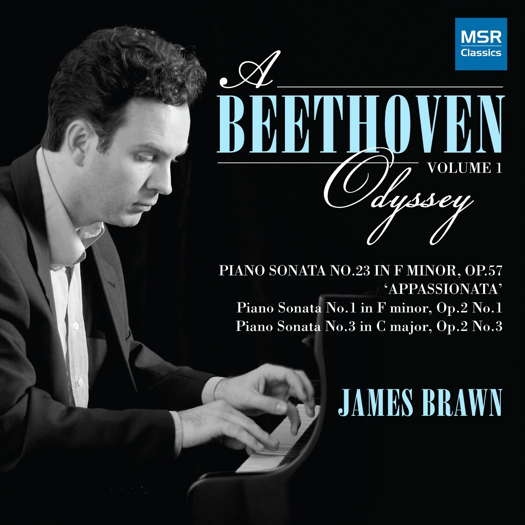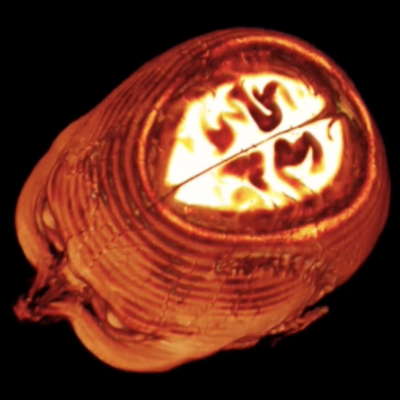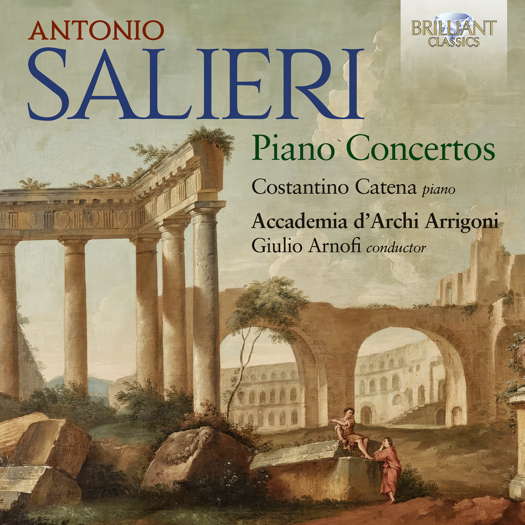- Martinů
- Bel Air Classiques
- British Youth Opera
- Count Razumovsky
- MDG
- Thurston Dart
- Aleppo
- John Savournin
 SPONSORED: CD Spotlight. Masterfully Controlled - James Brawn's Beethoven Odyssey impresses Andrew Schartmann.
SPONSORED: CD Spotlight. Masterfully Controlled - James Brawn's Beethoven Odyssey impresses Andrew Schartmann.
All sponsored features >>
 DISCUSSION: Composers Daniel Schorno and John Dante Prevedini discuss creativity, innovation and re-invention with Maria Nockin, Mary Mogil, Giuseppe Pennisi and Roderic Dunnett.
DISCUSSION: Composers Daniel Schorno and John Dante Prevedini discuss creativity, innovation and re-invention with Maria Nockin, Mary Mogil, Giuseppe Pennisi and Roderic Dunnett.

Brimming with Good Humour
GEOFF PEARCE listens to piano music by Salieri
'... a fine disc ...'
This disc presents the two surviving keyboard concertos of Antonio Salieri (1750-1825), written when he was twenty-three years old, originally conceived for harpsichord, and also includes the Sinfonia 'Veneziana' in D, written some seven years later, and the first recording of a piano sonata in C which was also written some time in the 1770s. To be honest, I have not heard a great deal of Salieri's music before, apart from a charming little concerto for flute and oboe, and I think a mass or a requiem. However he was an important court composer in Vienna, and had some notable students - Beethoven, Czerny, Hummel, Schubert and Liszt amongst them.
Unfortunately, after his death, his music has been largely forgotten, and probably would remain so if it were not for novels by Peter Shaffer and Miloš Forman's famous film Amadeus, based on one of Shaffer's works. Since then there has been interest in some of Salieri's operas, but the instrumental music has still been largely ignored. This is a pity as they are attractive and well-crafted works. Apart from the Piano Sonata in C, the other works on this disc have all had one or more recordings.
The first recording on this disc is the Piano Concerto in C Major. This is in three movements, as is normal for the period. The first movement is attractive and quite lively. It does not present as particularly profound or virtuosic, but nevertheless is interesting. It is scored for a typical classical orchestra, of strings, a pair of oboes and horns. The cadenza is by far the most florid part of the movement, and the notes do not say who wrote it - perhaps the fine pianist on this recording, Costantino Catena.
Listen — Salieri: Allegro maestoso (cadenza) (Piano Concerto in C )
(97268 track 1, 7:10-7:53) ℗ 2025 Brilliant Classics :
The second movement is marked 'Larghetto' and is a Siciliana with the strings in pizzicato. It is a charming, affectionate movement, and there are some nice touches where there are modulations.
Listen — Salieri: Larghetto (Piano Concerto in C )
(97268 track 2, 4:00-4:57) ℗ 2025 Brilliant Classics :
The third movement, a rippling rondo, reminds me of the geniality of Haydn. It does require a precision and lightness of touch.
Listen — Salieri: Rondo. Andantino (Piano Concerto in C )
(97268 track 3, 3:43-4:31) ℗ 2025 Brilliant Classics :
The Sinfonia in D, 'Veneziana', is in three movements and lasts about ten minutes. It is scored for the same size orchestra as the previous work. The writer of the note proposes that this work could be an amalgamation or a pastiche of two earlier 'operatic' symphonies - somewhat like the overture introduction to an opera. In any case, this piece is brimming with good humour. I especially like the rollicking fast finale.
Listen — Salieri: Finale (Sinfonia in D, Veneziana)
(97268 track 4, 7:54-8:37) ℗ 2025 Brilliant Classics :
This is followed by the three movement Concerto in B flat. The first movement is graceful and the orchestra plays a beautiful introduction before the piano enters. I actually warmed a little more to this work than I did to the first concerto. I found the first movement more substantial. The composer is fond of his modulations, as was also evident in the first concerto, and the cadenza here was written by the composer.
Listen — Salieri: Allegro moderato (Piano Concerto in B flat)
(97268 track 5, 5:11-5:57) ℗ 2025 Brilliant Classics :
The second movement, broad and beautifully ornamented with only the lightest of scoring - violins - again captures me more than did the previous concerto, and certainly this reveals that the composer's instrumental music warrants more attention.
Listen — Salieri: Adagio (Piano Concerto in B flat)
(97268 track 6, 2:55-3:41) ℗ 2025 Brilliant Classics :
The final movement, a 'Tempo di Menuetto', is a theme and variations, sprightly and elegant, and sort of reminds me of the last movement of Mozart's Concerto for Bassoon. Some of the variations are for solo piano, and others also employ the orchestra. This is a charming movement, and the final variation has a 'Turkish' tone as was often the rage in Vienna at the time. Altogether I enjoyed this concerto better than the first one.
Listen — Salieri: Tempo di Menuetto (Piano Concerto in B flat)
(97268 track 7, 5:47-6:25) ℗ 2025 Brilliant Classics :
The final piece, the Sonata in C major, has not been recorded before, and this appears to be the only surviving piece in this genre. It is divided into six short movements all in the same key and takes just over eight minutes to perform. It is an attractive, but not a remarkable piece, especially when one considers what else was being written around that time.
Listen — Salieri: Sonata in C
(97268 track 8, 3:49-4:48) ℗ 2025 Brilliant Classics :
Brilliant Classics has produced a fine disc, with very neat and precise piano playing from Costantino Catena and excellent playing from the Accademia d'Archi Arrigoni with its director Giulio Arnofi. The sound quality is excellent throughout and the accompanying booklet informative, yet concise.
Copyright © 8 January 2025
Geoff Pearce,
Sydney, Australia



